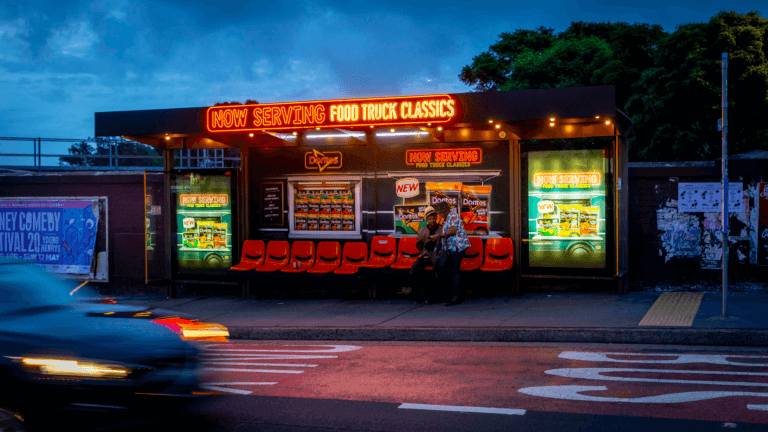
The impacts of the COVID-19 pandemic on the out-of-home (OOH) industry was felt across the globe—Australia being one region of no exception. Almost 17 months have passed since March 2020 and as the dust begins to settle and we can start to understand how things will take shape from a long-term perspective, the outlook for the OOH industry looks promising. This article will focus on Australia’s outdoor advertising industry specifically, and also discuss some unique opportunities this market faces in the coming years. What was once a country that hadn’t made a significant impact on the global OOH market, is now a region projected to be one of the major top contenders and is furthermore setting the pace for competing brands.
The World OOH Market
While advertising companies scrambled in 2020 to adapt to the world’s heightened hesitations, by and large, OOH media suffered. Comparatively speaking, global (OOH) advertising revenues, including all digital, traditional and ambient media platforms, increased an estimated 7.5% to $55.99 billion in 2018, which was the fastest growth rate in 11 years, according to new research from PQ Media, 2020’s revenues decelerated by 5.4% in the first half of the year. This all to say, the second half of that same year showed some promising indicators that OOH was here to stay. In the latter half of 2020, PQ Media analysts anticipated an 8.5% growth surge in 2020, which was the fastest expansion in more than a decade, according to PQ Media’s Global Out-of-Home Media Forecast 2019
Australia is An Emerging Force in OOH
According to Statista, Australia’s OOH market was forecasted to be worth about 1.45 billion Australian dollars. Economy-wise, the country felt a seemingly unpredictable level of impact on their industries like many others during the heat of the pandemic. Some industries down under boomed—like the crazy high housing prices, strong car sales, and record-breaking media consumption (by no surprise). Others like the OOH industry, however, did not. At its worst month in May of 2020, OOH revenues dropped by a whopping 68%.
That all to say the future is looking bright for outernet media despite the previous year’s numbers. Like many OOH industries across the world, the decreased revenues made for some pretty integral shifts. This period of shaky stability, caused advertisers to really reflect on how their communications were being delivered in addition to recalibrating and refining how they distributed campaign data. This came in the form of massive investments in the digital out-of-home (DOOH) infrastructure—more specifically, the technology that hosts, plans, and distributes the campaigns itself.
A Conversation on Programmatic
Advertisers in Australia are increasingly turning to programmatic DOOH. Almost one-quarter of Australian agencies traded DOOH inventory programmatically for the first time during 2020. Additionally, more than 10% of ad agencies have also increased their programmatic investment in an otherwise depleted OOH market. Programmatic DOOH provides for more flexible buying options, operational efficiency, and enhanced data targeting options. Gai Le Roy, the chief executive of IAB Australia says that “I have every confidence that the programmatic DOOH market will boom through 2021 and 2022, embracing the benefits of programmatic while also retaining the long-standing agency approach to developing fit for purpose OOH creative for different environments and placements.”
Famous Australian Campaigns
While Australia may not be the first country that comes to mind when thinking about stand-out OOH campaigns, it’s a region that often gets overlooked. The country has been a significant player in outdoor advertising and has a pretty impressive portfolio. Let’s take a look at some of the most notable Australian OOH campaigns.
Campaign: Doritos Food Truck Classics
In 2020, Newtown’s bus shelters in Sydney’s inner West were transformed into an eye-catching display. The Doritos Food Truck Classics were brought to the street in an immersive special-build installation that included artwork and physical features made to recreate the feel of a food truck. The bus shelter was lit with neon roof signage and wrapped in branded decals that invited commuters to take a seat with bespoke and classic food truck seating. The campaign won the Q1 Grand Prix in the OMA’S Creative Collection and was also the ‘Best use of Innovation’ Winner.

Campaign: Know My Name
That same year, The National Gallery of Australia released their Know My Name campaign with the goal to increase representation for Australian women artists. In the immersive fashion of the Doritos campaign, Know My Name had omnichannel compatibility—allowing audiences to engage with the billboard through their mobile device. By hovering over the ad with their phone cameras, they were able to “uncover the story behind the six women artists featured: Melinda Harper, Nora Heysen, Olive Cotton, Robyn Stacey, Grace Cossington Smith and Sally Gabori.”

Campaign: Tasmania
In 2021, the bus shelter OOH Tasmania campaign utilized a creative use of lighting in this special build. Its goal was to invoke the feeling of warmth for commuters and enticing Aussies to “come down for air”—which is the country’s tourism slogan.

Wrap Up
Over the past ten years, we have witnessed Australia invest in their OOH, produce uniquely creative campaigns that have captured global audiences, and soon—we will begin to see them competing more heavily in the international OOH industry through their programmatic infrastructure. Although their outdoor advertising market took a hit at the beginning of COVID, like many other countries, the future looks promising for Australia’s OOH industry.


